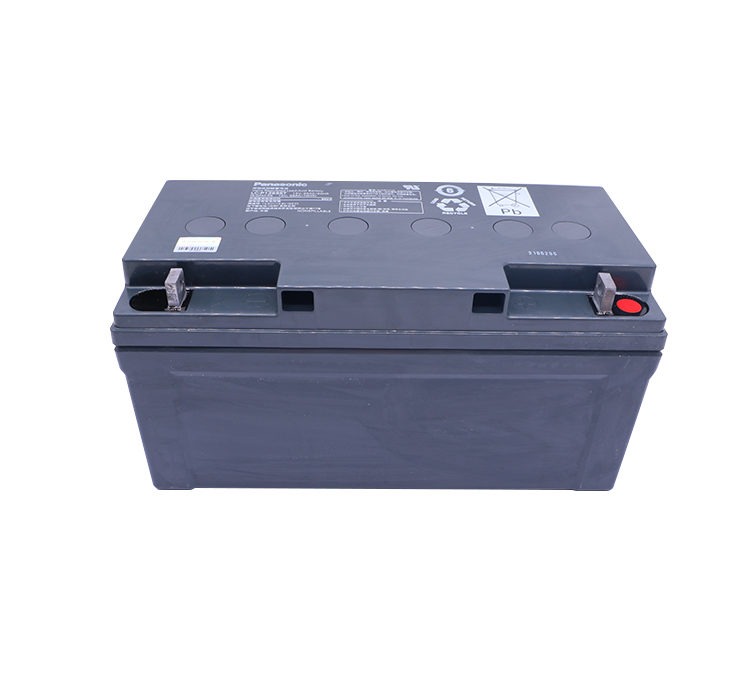
May 27, 2022 | Company News
There are two types of valve regulated sealed lead-acid batteries: one is the valve regulated sealed lead-acid battery with an ultra-fine glass fibre diaphragm (AGM) and the other is the valve regulated sealed lead-acid battery with a colloidal electrolyte (GFL) (abbreviated as GFL-valve regulated sealed lead-acid battery). They both use the cathode absorption principle to enable the battery to be sealed. Therefore, there must be a diaphragm void of around 10% in the diaphragm of the AGM-valve regulated sealed lead-acid battery. For the GFL-valve regulated sealed lead-acid battery, the skeleton has to shrink further after the infused silica sol becomes a gel and the viscosity of the silica sol should be controlled at around 10 mPa.s so that the gel appears as a crack running between the positive and negative electrode plates. The gap or fissure is a channel for the oxygen precipitated from the positive plate to reach the negative electrode. In the production of AGM-valve regulated sealed lead-acid batteries, too much electrolyte filling is not conducive to the recombination of oxygen at the cathode, too little electrolyte filling will cause the internal resistance of the AGM-valve regulated sealed lead-acid battery to increase; and in the production of GFL-valve regulated sealed lead-acid batteries, if the viscosity of the silicone solution is too high, i.e. the amount of silicon solution added is too large, it will cause the cracks in the gel to be too large and increase the internal resistance of the GFL-valve regulated sealed lead-acid battery, and vice versa. On the contrary, it is not conducive to the recombination of oxygen at the cathode. Therefore, valve regulated sealed lead-acid batteries have very strict requirements for the production process. What does thermal runaway of a valve regulated sealed lead-acid battery mean?
Thermal runaway of valve regulated sealed lead-acid batteries
Thermal runaway refers to the valve-controlled sealed lead-acid battery in the late charging (or floating state) due to no timely adjustment of the charging voltage, so that the valve-controlled sealed lead-acid battery charging current and temperature occurs a cumulative mutual enhancement, when the valve-controlled sealed lead-acid battery temperature rises sharply, which leads to valve-controlled sealed lead-acid battery tank expansion and deformation, water loss speed increases, and even valve-controlled sealed lead-acid battery is damaged.
The above phenomenon is a very destructive phenomenon that occurs when the AGM-valve regulated sealed lead-acid battery is not used properly. This is due to the fact that the AGM-valve regulated sealed lead-acid battery has a liquid-poor tight assembly design, where 10% of the pore space in the partition must be kept free of electrolyte, resulting in poor thermal conductivity and low thermal capacity inside the AGM-valve regulated sealed lead-acid battery. If the oxygen generated at the positive pole reaches the negative pole and reacts with the negative lead during charging, heat will be generated, which will raise the temperature of the AGM-valve regulated sealed lead-acid battery if it is not guided away in time; if the charging voltage is not reduced in time, the charging current will increase and the speed of oxygen precipitation will increase, which in turn will raise the temperature of the AGM-valve regulated sealed lead-acid battery. If this vicious cycle continues, it will cause thermal runaway phenomenon.
The GFL-valve regulated sealed lead-acid battery has the same amount of electrolyte as an ordinary lead-acid battery, and is filled with gel electrolyte around the pole group and between the tank and the battery, which has a large thermal capacity and heat dissipation and does not generate heat accumulation. The GFL-valve regulated sealed lead-acid battery has not been found to be thermally uncontrolled in more than 30 years of operation.
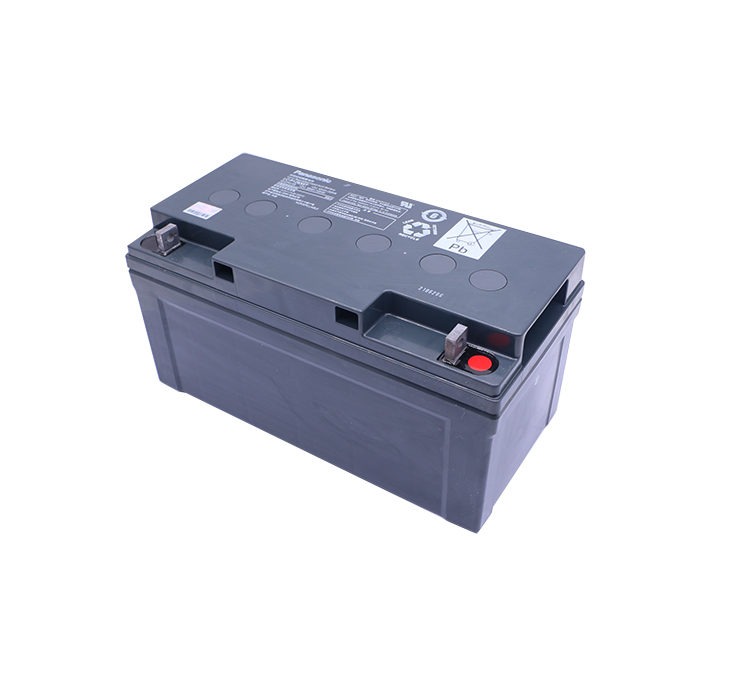
May 26, 2022 | Company News
Both the AGM-valve regulated sealed lead acid battery and the GFL-valve regulated sealed lead acid battery use the cathode absorption principle to seal the battery. When a valve regulated sealed lead acid battery is charged, oxygen is precipitated from the positive terminal and hydrogen from the negative terminal. Oxygen precipitation from the positive electrode starts when the positive electrode reaches 70% charge. The oxygen precipitated reaches the negative electrode and reacts with it in the following way to achieve cathodic absorption
2Pb十O2=2PbO
2PbO十2H2SO4:2PbS04+2H20
Hydrogen precipitation at the negative electrode starts when the charge reaches 90%, which, together with the reduction of oxygen at the negative electrode and the increase of the hydrogen overpotential at the negative electrode itself, prevents a large number of hydrogen precipitation reactions. For the AGM-valve regulated sealed lead acid battery, although the majority of the battery electrolyte is maintained in the AGM-valve regulated sealed lead acid, 10% of the diaphragm pores must be kept free of electrolyte, i.e. a liquid-poor design, through which the oxygen generated at the positive electrode reaches the negative electrode and is absorbed by the negative electrode.
For the GFL-valve regulated sealed lead acid battery, a three-dimensional porous mesh structure with a skeleton of SiO2 plasmas, which encloses the electrolyte, is used inside the GFL-valve regulated sealed lead acid battery, and when the silica sol filled with the GFL-valve regulated sealed lead acid battery becomes a gel, the skeleton has to shrink further, causing cracks in the gel to run between the positive and negative plates, giving the oxygen precipitated from the positive electrode a pathway to the negative electrode.
The difference lies in the way in which the electrolyte is “fixed” and the way in which oxygen is provided to reach the negative electrode.
The AGM-valve regulated sealed lead acid battery uses a pure aqueous sulphuric acid solution as the electrolyte, with a density of 1.29-1.3 lg/cm3, most of which is present in the glass fibre membrane, except for a part of the electrolyte absorbed inside the electrode plate. In order to keep the plates in full contact with the electrolyte, the pole groups are tightly assembled. In addition, to ensure that the battery has sufficient life, the plates should be designed to be thick and the positive plate grid alloy is a Pb-Ca-Sn–A1 tetrad.
The electrolyte of the GFL-valve regulated sealed lead acid battery is made of silica sol and sulphuric acid, the concentration of the sulphuric acid solution is lower than that of the AGM-valve regulated sealed lead acid battery, usually 1.26 to 1.28 g/cm3. The amount of electrolyte is 20% more than that of the AGM-valve regulated sealed lead acid battery and is comparable to that of a normal lead-acid battery. The electrolyte exists in a colloidal state and is filled in the diaphragm and between the positive and negative electrodes, the sulphuric acid electrolyte is surrounded by a gel and does not flow out of the battery.
As the GFL-valve regulated sealed lead acid battery is a liquid-rich, non-fastening construction, the positive plate grid material can be a low antimony alloy or a tubular battery positive plate. At the same time, the plates can be made thinner in order to increase the capacity of the GFL-valve regulated sealed lead acid battery without reducing the life of the GFL-valve regulated sealed lead acid battery, and the space inside the GFL-valve regulated sealed lead acid battery tank can be enlarged.
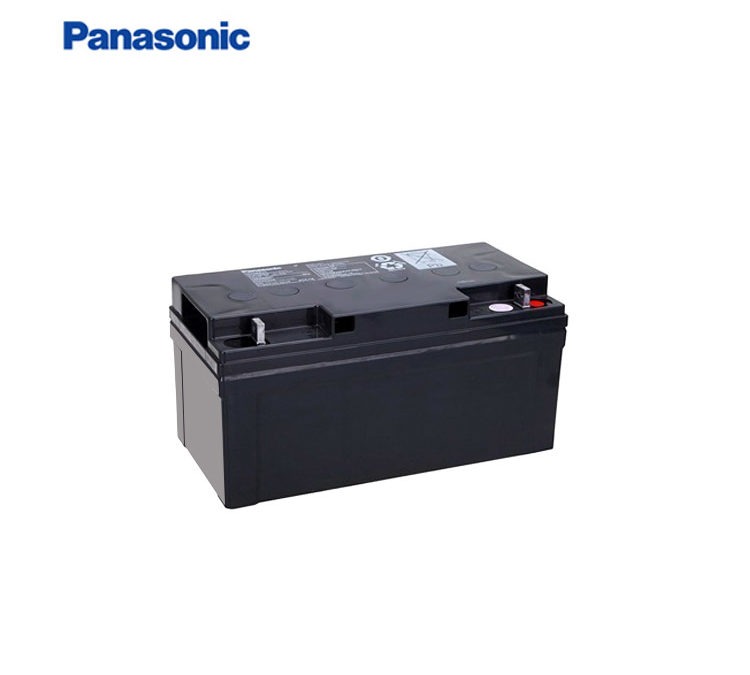
May 25, 2022 | Company News
Service life of valve regulated sealed lead-acid batteries
There are many factors affecting the service life of valve regulated sealed lead-acid batteries, both in terms of design and manufacture of valve regulated sealed lead-acid batteries, and in terms of user use and maintenance conditions. In terms of the former, the corrosion resistance of the positive plate grid and the water loss rate of the valve regulated sealed lead-acid battery are the two most important factors. Due to the increased thickness of the positive plate grid, using Pb-Ca-Sn-A1 quadruple corrosion-resistant alloy, the service life of the valve-controlled sealed lead-acid battery can reach 10-15 years according to the corrosion rate of the plate grid. However, from the results of the use of the VRLA battery, the rate of water loss becomes the most critical factor affecting the service life of the VRLA battery.
Due to the depleted design of the AGM-valve regulated sealed lead-acid battery, the capacity of the valve regulated sealed lead-acid battery is extremely sensitive to the amount of electrolyte. A 10% loss of water in a valve regulated sealed lead-acid battery will reduce capacity by 20%; a 25% loss of water will end the life of the AGM-valve regulated sealed lead-acid battery. However, the GFL-valve regulated sealed lead-acid battery has a liquid-rich design with a lower electrolyte density than the AGM-valve regulated sealed lead-acid battery, which reduces the corrosion rate of the grid alloy; the electrolyte volume is also 15% to 20% more than the AGM-valve regulated sealed lead-acid battery, making it less sensitive to water loss. All these measures contribute to the extension of the service life of the GFL-valve regulated sealed lead-acid battery. According to the information provided by German Sunshine, the water contained in the colloidal electrolyte is sufficient to run the GFL-valve regulated sealed lead-acid battery for 12-14 years. 4%-5% of the water is lost in the first year of operation of the GFL-valve regulated sealed lead-acid battery, and then decreases year by year.
Valve regulated sealed lead-acid battery compound efficiency
Compound efficiency refers to the ratio of the oxygen produced by the positive electrode being absorbed by the negative electrode when charging. The charging current, the temperature of the valve regulated sealed lead-acid battery, the characteristics of the negative electrode and the speed of oxygen reaching the negative electrode all affect the gas compounding efficiency of the valve regulated sealed lead-acid battery.
According to the GFL-valve regulated sealed lead-acid battery product manual provided by German Sunshine, the oxygen compounding efficiency of the GFL-valve regulated sealed lead-acid battery is low at the beginning of use, but after a few months of operation, the compounding efficiency can reach more than 95%. This phenomenon can also be verified by the rate of water loss of the GFL-valve regulated sealed lead-acid battery, which is higher in the first year of operation, reaching 4% to 5%, and then gradually decreasing. In the early stages of formation, the colloidal electrolyte has no or very few internal cracks, which do not provide sufficient channels for the oxygen precipitated from the positive electrode. With the gradual contraction of the colloid, more and more channels will be formed, then the compound efficiency of oxygen must gradually increase, and water loss must also be reduced.
AGM-valve regulated sealed lead-acid batteries have unsaturated voids in the diaphragm, which provide a large number of oxygen channels and therefore have a high oxygen compounding efficiency, which can reach over 98% for new AGM-valve regulated sealed lead-acid batteries.
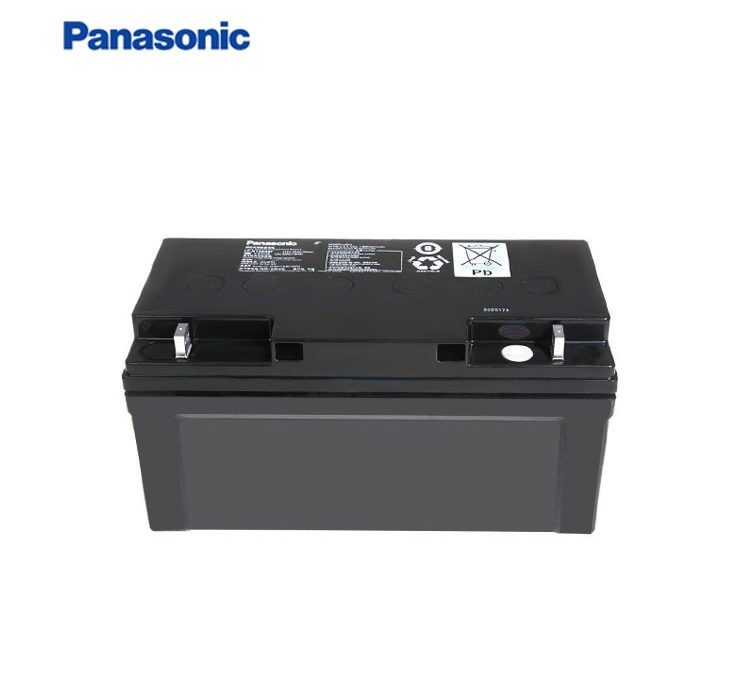
May 24, 2022 | Company News
The discharge capacity of early GFL-valve regulated sealed lead-acid batteries was only about 80% of that of ordinary lead-acid batteries. This was due to the use of poorly performing colloidal electrolyte directly into the unaltered ordinary lead-acid batteries. Recent research work has shown that improving the formulation of the colloidal electrolyte, controlling the size of the colloidal particles, incorporating hydrophilic polymer additives, reducing the concentration of the colloidal solution to improve the permeability and affinity to the pole plate, adopting a vacuum filling process, replacing the rubber spacer with a composite spacer or AGM to improve the absorption of liquid in the GFL-valve regulated sealed lead-acid batteries; eliminating the precipitation tank in the GFL-valve regulated sealed lead-acid battery and moderately increasing the area of the pole plate with active The result is that the discharge capacity of the GFL-valve regulated sealed lead-acid battery reaches or is close to that of an ordinary lead-acid battery.
The AGM-valve regulated sealed lead-acid battery has less electrolyte, the thickness of the electrode plate is thicker and the utilisation rate of the active substance is lower than that of a normal lead-acid battery, therefore the discharge capacity of the AGM-valve regulated sealed lead-acid battery is about 10% lower than that of a normal lead-acid battery.
Internal resistance and high current discharge capacity of valve regulated sealed lead-acid batteries
The glass fibre partition used in the AGM-valve regulated sealed lead-acid battery has a 90% porosity and the sulphuric acid is adsorbed in it. The AGM-valve regulated sealed lead-acid battery is tightly assembled so that the diffusion and electromigration of ions in the partition is very little impeded.
Although the diffusion rate of ions in the gel is close to that in aqueous solution, the migration and diffusion of ions is influenced by the structure of the gel. The more curved the ion diffusion path in the gel, the narrower the pores in the structure and the greater the obstruction. As a result, the internal resistance of the GFL-valve regulated sealed lead-acid battery is greater than that of the AGM-valve regulated sealed lead-acid battery.
However, the test results show that the high current discharge performance of the GFL-valve regulated sealed lead-acid battery is still very good and fully meets the requirements of the relevant standards for high current discharge performance of batteries. This is due to the fact that the concentration of acid and other relevant ions in the liquid layer inside the porous electrode and near the electrode plate plays a key role in high current discharge.
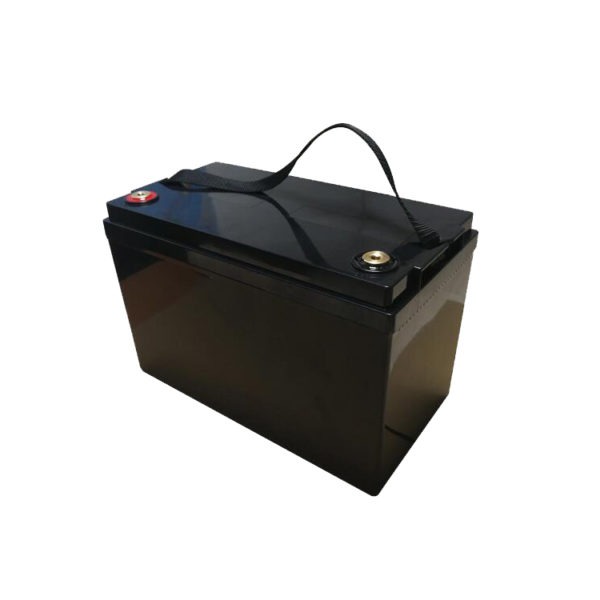
May 20, 2022 | Company News
According to the results of expert research, a little LiFePO4 is enough to achieve 1000 cycles of soft packing with a capacity retention of 86.5%.LiFePO4 battery The full name of lithium iron phosphate lithium ion battery refers to a lithium ion battery using lithium iron phosphate as a positive electrode material. Now, the LiFePO4 battery has a better and better prospect in the global market, and is used in more and more places in people’s lives, so let’s discuss “what is the LiFePO4 battery and why it is used more and more in life”.Since there are many types of LiFePO4 batteries, let’s briefly discuss one of them first—12V 100Ah LiFePO4 battery pack 32700-4S17P.
What Is The LiFePO4 Battery Pack 32700-4S17P
1. What is the 12V 100Ah LiFePO4 Battery Pack 32700-4S17P?
As you seen,the 12V 100Ah LiFePO4 battery pack 32700-4S17P’s dimension is 328*172*215*220mm.From the name, we can know the nominal voltage and nominal capacity is 12.8V and 100Ah. Next, let me detail other information about it. Its battery cell is 3.2V 32700 6Ah and its weight is 13.1Kg, which is not very light. The main function is solar energy storage, which is now widely used in new energy vehicle industry, urban power grid, UPS power supply, startup power and other fields.
2. Why is the 12V 100Ah LiFePO4 Battery Pack 32700-4S17P so widely used ?
(1)High safety
The P-O bond in 12V 100Ah LiFePO4 Battery Pack 32700-4S17P is strong and difficult to decompose. Even at high temperatures or when overloaded, the structure does not break down and heat up or form strong oxidizing agents such as lithium cobaltate, so it has a good safety profile. According to the study, in practice there was a small probability of ignition but not a single case of explosion, while in experiments with overcharging using a high-voltage charge that exceeded its own discharge voltage by several times, it was still found to be explosive. Nevertheless, the safety of LiCoO2 batteries compared to conventional liquid electrolytes was significantly improved.
(2)Long life expectancy
Long-life lead acid batteries have a life of approximately 300 cycles to 500 cycles, while the 12V 100Ah LiFePO4 battery 32700-4S17P has a life of over 2000 cycles on a standard charge (5 hours). When this is taken into account, the performance-to-price ratio is theoretically more than 4 times that of lead-acid batteries.
(3)Large capacity
Often the batteries in the full capacity is not fully discharged from the working conditions, the capacity will quickly drop below the rated capacity value, this phenomenon is called the memory effect. This phenomenon is called the memory effect. The 12V 100Ah LiFePO4 Battery Pack 32700-4S17P can be charged and used at any time, regardless of its condition, without having to be discharged and then recharged.
(4)Light weight
The volume of a battery with the same capacity is 2/3 the volume of a lead acid battery and 1/3 the weight of a lead acid battery.
(5)Environmental Protection
The batteries are generally considered to be heavy and precious metal free (NiMH batteries require precious metals), non-toxic (certified and approved by SGS), non-polluting and compliant with European RoHS regulations, making them environmentally friendly. An important reason why this battery is popular in the industry is the consideration for the environment. However, one thing should be emphasized, the battery belongs to the new energy industry, but it is not immune to the problem of heavy metal pollution.
(6)Good high temperature performance
The 12V 100Ah LiFePO4 Battery Pack 32700-4S17P thermal peak up to 350℃-500℃, while lithium manganate and lithium cobaltate are only around 200℃. Wide operating temperature range (-20℃-60℃) with high temperature resistance Lithium iron phosphate battery pack thermal peak up to 350℃ – 500℃, while lithium permanganate and cobalt acid only up to around 200℃.
All above is the answer to what the LiFePO4 battery is and why it is used widely. If you choose them, you will bring unexpected gains. By the way, Shenzhen Youtek Technology Company is its distributor, if you want to buy, you can send an e-mail to info@unitek-corp.com to consult it.




